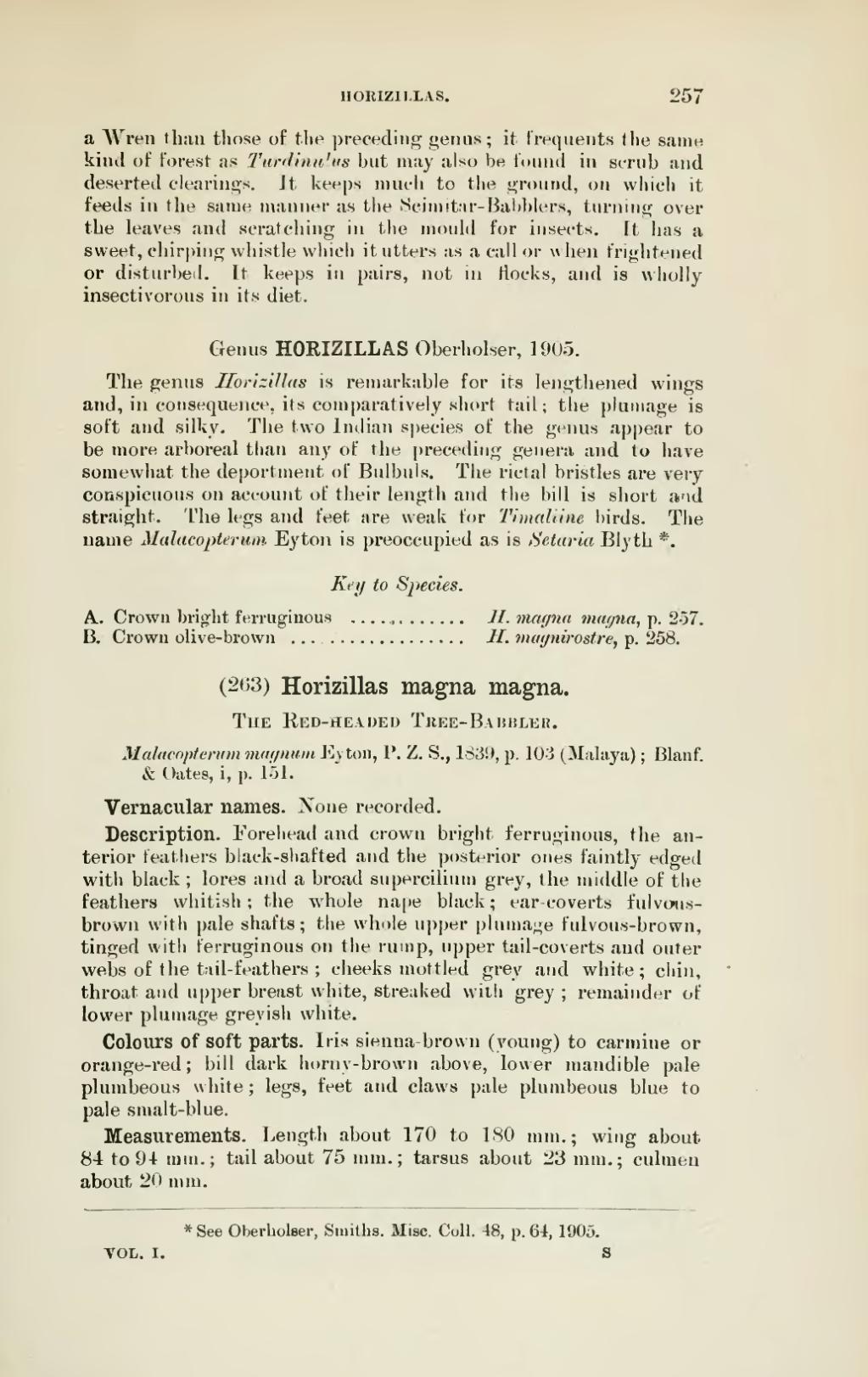a Wren than those of the preceding genus; it frequents the same kind of forest as Turdinulus but may also be fonnd in scrub and deserted clearings. It keeps much to the ground, on which it feeds in the same manner as the Scimitar-Babblers, turning over the leaves and scratching in the mould for insects. It has a sweet, chirping whistle which it utters as a call or when frightened or disturbed. It keeps in pairs, not in flocks, and is wholly insectivorous in its diet.
Genus HORIZILLAS Oberholser, 1905.
The genus Horizillas is remarkable for its lengthened wings and, in consequence, its comparatively short tail; the plumage is soft and silky. The two Indian species of the genus appear to be more arboreal than any of the preceding genera and to have somewhat the deportment of Bulbuls. The rictal bristles are very conspicuous on account of their length and the bill is short and straight. The legs and feet are weak for Timaliine birds. The name Malacopterun Eyton is preoccupied as is Setaria Blyth[1].
Key to Species.
| A. |
Crown bright ferruginous
....................................................................................................................................................................................................................................................
|
H. magna magna, p. 257. |
| B. |
Crown olive-brown
....................................................................................................................................................................................................................................................
|
H. magnirostre, p. 258. |
(263) Horizillas magna magna.
The Red-headed Tree-Babbler.
- Malacopterum magnum Eyton, P. Z. S., 1839, p. 103 (Malaya); Blanf. & Oates, i, p. 151.
Vernacular names. None recorded.
Description. Forehead and crown bright ferruginous, the anterior feathers black-shafted and the posterior ones faintly edged with black; lores and a broad supercilium grey, the middle of the feathers whitish; the whole nape black; ear-coverts fulvous-brown with pale shafts; the whole upper plumage fulvous-brown, tinged with ferruginous on the rump, upper tail-coverts and outer webs of the tail-feathers; cheeks mottled grey and white; chin, throat and upper breast white, streaked wiiii grey; remainder of lower plumage greyish white.
Colours of soft parts. Iris sienna-brown (young) to carmine or orange-red; bill dark horny-brown above, lower mandible pale plumbeous white; legs, feet and claws pale plumbeous blue to pale smalt-blue.
Measurements. Length about 170 to 180 mm.; wing about 84 to 94 mm.; tail about 75 mm.; tarsus about 23 mm.; culmen about 20 mm.
- ↑ See Oberholser, Smiths. Misc. Coll. 48, p. 64, 1905.
